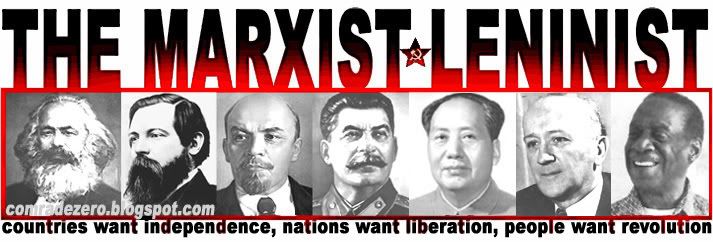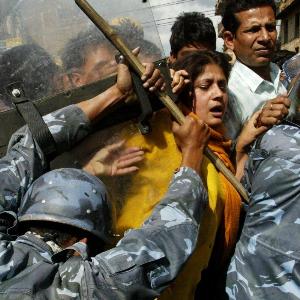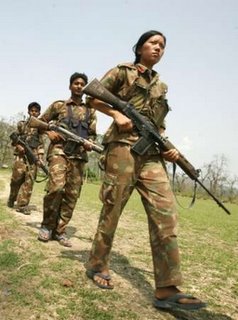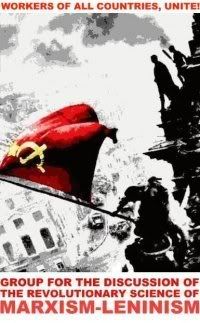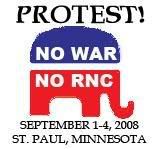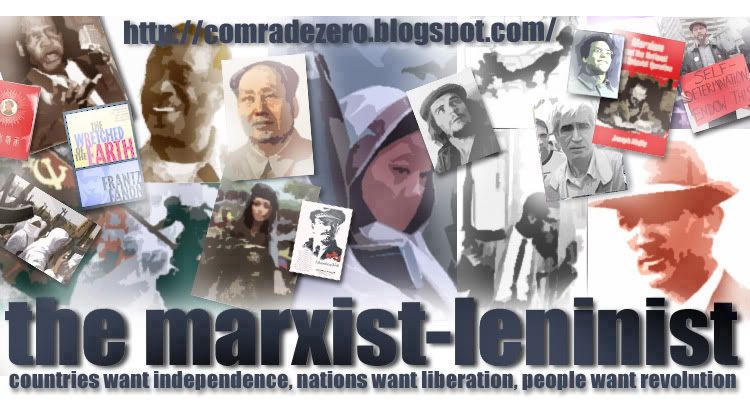May 1 and the Fight for Equality and Self-Determination
 May 1, 2006 will be a historic day as millions of people, mainly Mexicanos (immigrants from Mexico), Chicanos and Central Americans, pour into the streets of United States to support the struggle for immigrant rights. Many have called this upsurge in protests a ‘new civil rights movement.’ We think that this is a very good description of the broad united front of labor, religious, community and youth organizations and the grassroots participation. Most importantly, this fight for equality and self-determination in fact represents a challenge to the monopoly capitalists that rule this country.
May 1, 2006 will be a historic day as millions of people, mainly Mexicanos (immigrants from Mexico), Chicanos and Central Americans, pour into the streets of United States to support the struggle for immigrant rights. Many have called this upsurge in protests a ‘new civil rights movement.’ We think that this is a very good description of the broad united front of labor, religious, community and youth organizations and the grassroots participation. Most importantly, this fight for equality and self-determination in fact represents a challenge to the monopoly capitalists that rule this country.The civil rights movement of the 1950s and 1960s was more than a fight for civil rights; it was a Black liberation movement. It was a struggle of the African American people for full equality. For 75 years, Jim Crow in the South, the system of legal segregation backed by the death squads of the Ku Klux Klan and the systematic discrimination in housing, education and employment in the North and West denied African Americans equality with whites.
Today, the mass mobilization of Mexicanos, Chicanos and other Latinos shows the grassroots desire for full equality in the face of discriminatory immigration laws and practices. A key demand is legalization of the undocumented, which will help them to challenge exploitation and racism and aid in the reunification of their families. The Bush administration’s call for a
 ‘guest worker program’ to aid business would be a step in the wrong direction, as it would establish a group of second-class residents whose only right would be to work for low pay.
‘guest worker program’ to aid business would be a step in the wrong direction, as it would establish a group of second-class residents whose only right would be to work for low pay.The Black liberation movement was also a struggle for self-determination. It is no accident that the movement began in the U.S. South, from the Montgomery, Alabama bus boycott to the sit-in at Woolworth’s in Greensboro, North Carolina, for this is the home of the African American Nation. The African American Nation developed as slavery forged different African peoples with their own languages, cultures and religions into a single people with a common territory, economy, language and culture. After the end of the Civil War and slavery, the United States kept this new nation in chains through Jim Crow and the lynch mob. The Black liberation movement, by breaking the chains of segregation and the Klan, was a step toward both full equality for the African American people in the North and South and towards self-determination for the African American Nation.
 Mexicans in the U.S. Southwest have also been forged into a Chicano Nation, as the thousands of Mexicans conquered by the United States in 1848 have grown into millions due to immigration from Mexico under conditions of legal segregation, economic exploitation, systematic suppression of their language and culture and theft of their land. Just as African Americans were denied their human rights through Jim Crow, so today are Chicanos, Mexicanos, and other Latinos denied their human rights through unjust immigration laws. These laws are chains on the Chicano Nation, not only affecting millions of undocumented, but millions more of their family members who are legal residents or U.S. citizens.
Mexicans in the U.S. Southwest have also been forged into a Chicano Nation, as the thousands of Mexicans conquered by the United States in 1848 have grown into millions due to immigration from Mexico under conditions of legal segregation, economic exploitation, systematic suppression of their language and culture and theft of their land. Just as African Americans were denied their human rights through Jim Crow, so today are Chicanos, Mexicanos, and other Latinos denied their human rights through unjust immigration laws. These laws are chains on the Chicano Nation, not only affecting millions of undocumented, but millions more of their family members who are legal residents or U.S. citizens.This wave of anti-immigrant legislation in the works at the national, state and local levels, and the rise of new white vigilantes such as the Minutemen is not just a tactic to try to build support for the right, the Republicans and the Bush administration, who are suffering from their debacles in Iraq, New Orleans and the attempted privatization of Social Security. Just as the right is trying to reduce the Black population of New Orleans - one of the most important cities economically and culturally of the African American Nation - so too would the anti-immigrant movement try to reduce the Mexicano and Latino population. This is a direct attack on the Chicano Nation, which is gaining strength as Mexicanos and their children who settle in the Southwest become a part of the nation.
The African American movement of the 1950s and 1960s drew support from all nationalities and helped jumpstart the struggles of Asian Americans, Chicano/Latinos, Native Americans
 and Native Hawai’ians. Today’s struggle for immigrant rights is also drawing support from other immigrants, especially oppressed nationality (African, Arab, and Asian) communities who share the unjust treatment by a racist society that Mexicanos, Latinos and Chicanos face.
and Native Hawai’ians. Today’s struggle for immigrant rights is also drawing support from other immigrants, especially oppressed nationality (African, Arab, and Asian) communities who share the unjust treatment by a racist society that Mexicanos, Latinos and Chicanos face.Another similarity between the African American movement and the struggle today is the role of militant students and youth. African American college students started the direct action, which spread around the country, of sitting-in at segregated facilities and also spearheaded the drive for Black Studies on college campuses. Today’s Chicano, Mexicano and Latino youth, both immigrants and the children of immigrants, are walking out of their schools to join protests against the attempts to criminalize the undocumented and scapegoat immigrants.
African American workers were the backbone of the civil rights movement, from those who boycotted the buses in Montgomery to the garbage workers on strike in Memphis where Martin Luther King, Jr. was assassinated. In today’s struggle Mexicano, Chicano and Latino workers have also been the backbone of the movement, not just swelling the ranks of demonstrators, but also as organizers of the protests. Thus it is quite natural that the immigrant rights protests will be on May 1, International Workers Day, which commemorates the struggle of American workers, many of whom were immigrants, in the 1880s for an eight-hour day.
 In this spirit, we call upon workers of all nationalities to support their brother and sister Mexicano, Chicano and Latino workers, to fight for full equality for Mexicano and other Latino peoples and to uphold the right to self-determination for the Chicano Nation. This is because we share a common enemy - the capitalist class in general, and their representatives in the Bush administration and the right - that is behind the anti-immigrant, anti-Latino, anti-black,and anti-union policies of the government and the big corporations.
In this spirit, we call upon workers of all nationalities to support their brother and sister Mexicano, Chicano and Latino workers, to fight for full equality for Mexicano and other Latino peoples and to uphold the right to self-determination for the Chicano Nation. This is because we share a common enemy - the capitalist class in general, and their representatives in the Bush administration and the right - that is behind the anti-immigrant, anti-Latino, anti-black,and anti-union policies of the government and the big corporations.Long Live May 1st, International Workers Day!
Full Equality for Mexicanos and all immigrants!
Self-Determination for the African American and Chicano Nations!
Workers and Oppressed Peoples Unite!
Labels: Aztlan, Black Belt, black liberation, Chicanos, civil rights, FRSO, immigrant rights, May Day, National Question, Theory
View Post
